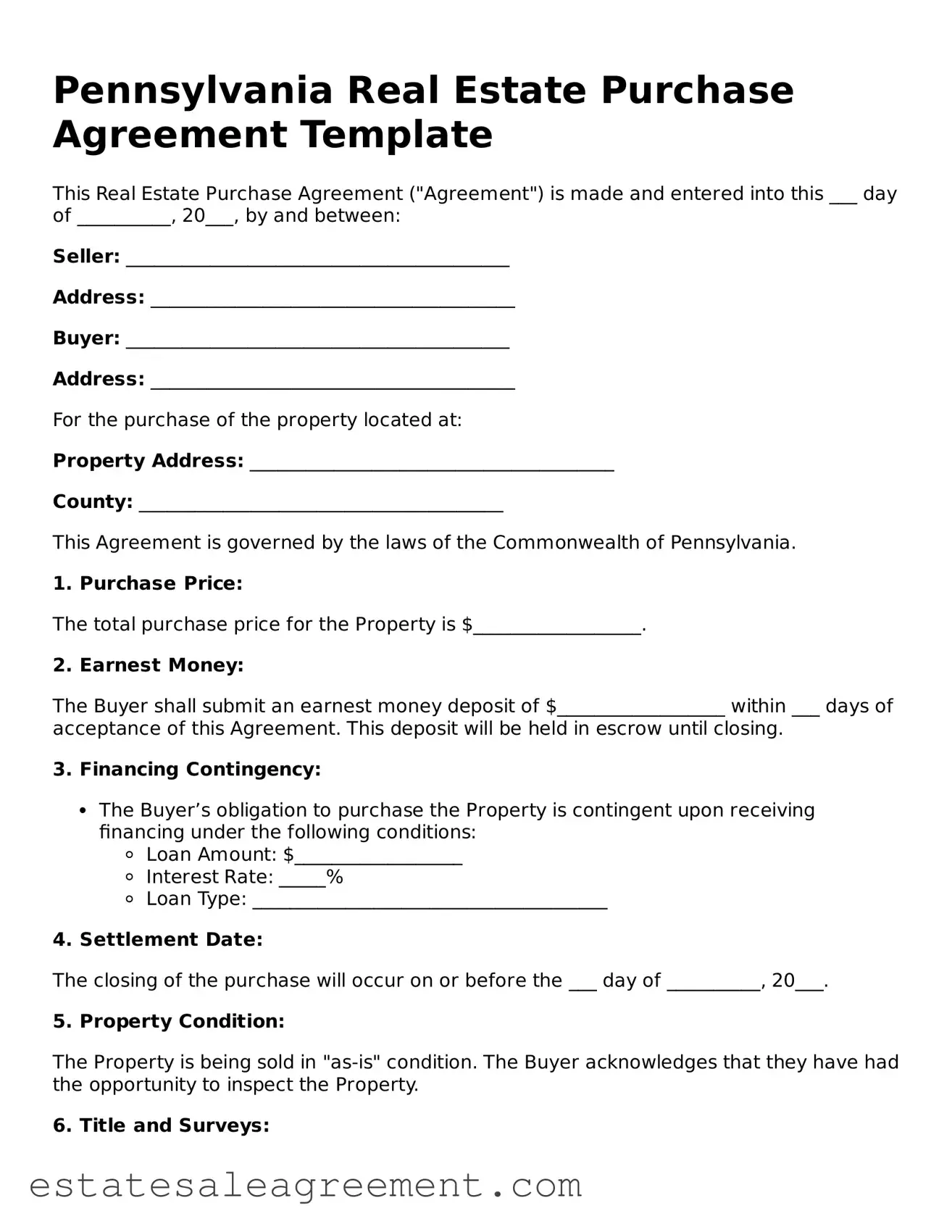Pennsylvania Real Estate Purchase Agreement Template
This Real Estate Purchase Agreement ("Agreement") is made and entered into this ___ day of __________, 20___, by and between:
Seller: _________________________________________
Address: _______________________________________
Buyer: _________________________________________
Address: _______________________________________
For the purchase of the property located at:
Property Address: _______________________________________
County: _______________________________________
This Agreement is governed by the laws of the Commonwealth of Pennsylvania.
1. Purchase Price:
The total purchase price for the Property is $__________________.
2. Earnest Money:
The Buyer shall submit an earnest money deposit of $__________________ within ___ days of acceptance of this Agreement. This deposit will be held in escrow until closing.
3. Financing Contingency:
- The Buyer’s obligation to purchase the Property is contingent upon receiving financing under the following conditions:
- Loan Amount: $__________________
- Interest Rate: _____%
- Loan Type: ______________________________________
4. Settlement Date:
The closing of the purchase will occur on or before the ___ day of __________, 20___.
5. Property Condition:
The Property is being sold in "as-is" condition. The Buyer acknowledges that they have had the opportunity to inspect the Property.
6. Title and Surveys:
The Seller shall provide clear and marketable title at closing. A title search will be completed by a title company selected by the Buyer.
7. Default:
- If the Buyer defaults, the earnest money may be retained by the Seller as liquidated damages.
- If the Seller defaults, the Buyer may seek a refund of the earnest money and/or specific performance.
8. Governing Law:
This Agreement shall be governed by the laws of the Commonwealth of Pennsylvania.
9. Entire Agreement:
This Agreement constitutes the entire understanding between the parties regarding the subject matter and supersedes all prior agreements.
IN WITNESS WHEREOF, the parties have executed this Agreement as of the date first above written.
Seller's Signature: ___________________________ Date: _______________
Buyer's Signature: ___________________________ Date: _______________
